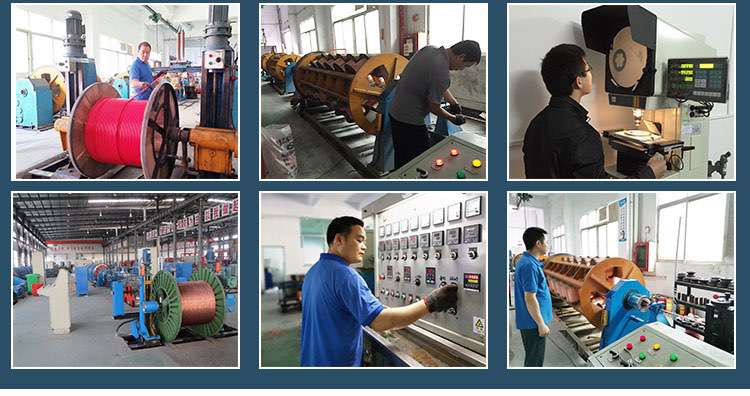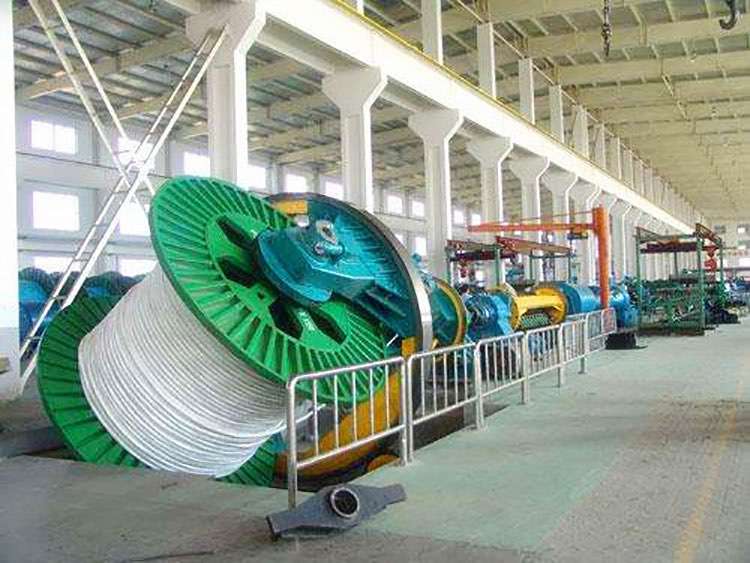 Author: Joey Wan
Author: Joey Wan  January 08,2021
January 08,2021
In recent years, the wire and cable manufacturing process, the application of new technologies, new equipment, and new materials involved has changed the relatively backward manufacturing process, improved process production efficiency, and played a positive role in promoting the innovation and development of the manufacturing industry. In the wire and cable manufacturing process, with the increase in the degree of automation of new equipment and the application of polymer materials, the wire and cable manufacturing industry has also entered the development stage of intelligence and automation. In the new era, the wire and cable manufacturing process also has new The characteristics are mainly reflected in the higher dependence of wire and cable manufacturing on automation equipment and the change of the previous manual operation of equipment. When wire and cable manufacturing, the new materials used can fully improve product performance and material quality.

The Manufacturing Process of Wire and Cable
Outsourcing specification single line---factory inspection---resistance test---insulation extrusion---finished product sheath---finished product packaging---factory inspection---factory finished product packaging
The main process of wire and cable manufacturing includes drawing, stranding, and coating. The specific manufacturing content of plastic wire and cable includes process links such as cable formation and outer sheath. In the actual manufacturing process, due to the actual use of the cable Obvious differences in requirements also need to pay attention to the analysis of the production of products of different types: specifications. For the more complex and high-standard wire and cable manufacturing, the repeatability of the manufacturing process is obviously more obvious. The main processes include drawing, stranded, and covered.
Draw
The drawing process is the content of the metal pressure processing process. This process is the primary process of each wire and cable manufacturing, and the process parameter is the mold matching technology, which is required in order to obtain the manufacturing process during the drawing process of copper and aluminum monofilament In most cases, the copper and aluminum materials are forced to pass through the mold under the action of external force, and the cross-sectional area is strongly compressed, and the physical shape is changed to the product of the required specification. The drawing process has a more significant effect, not only can obtain products with precise dimensions, but also keep the surface of the product smooth and the length of the drawn product; and the diameter can also be drawn according to actual needs, and the overall length can also be maintained. Consistent, drawing can also guarantee the mechanical properties of wires, cables, and products, but it is necessary to deeply understand the processing rate and the standard of drawing passes in the drawing process, and it has the characteristics of high energy consumption.
Stranded
The implementation of the stranding process is to enhance the flexibility of the wires and cables, and is more conducive to the laying and installation: the work is carried out, and two or more single wires can be interwoven in a predetermined direction. For specific operations, you can choose counterclockwise or Clockwise, its form includes regular twisting and irregular twisting. Under normal circumstances, twisting is single-wire twisting. The stranding process mainly includes conductor stranding, cable formation, and winding, etc. It should be noted that before the stranding process starts, ensure that the quality of the equipment meets the actual needs and relevant standards, and check the electrical and mechanical equipment and electrical switches and fence insurance. Work orders and process cards require the selection of die, tooth wheel pitch, and wire diameter measurement in twisting direction, etc.; they should be replaced. At the same time, select the stranded conductive core that meets the specific quality requirements to ensure that it remains tight and straight without serious bending or scratches. The copper wire needs to ensure that there is no oxidation and blackening on the surface.
Coated
Coating is to combine the different performance requirements of wire and cable applications. When using professional continuous coating machines and continuous extruders and other related equipment, it is also necessary to add different materials to the periphery of the conductor. The content of the coating process has always been diversified, and the coating process that needs to be applied for different materials also has significant differences. For example, most materials such as rubber, lead and plastics must be processed by extruding process, belt-shaped materials such as polyester film and aluminum-plastic composite film shall be longitudinally wrapped, and fibrous materials such as mica tape and non-woven fabric are mainly used for wrapping. Materials such as craft pitch and insulating paint are mainly applied in dip coating process. When the longitudinally wrapped aluminum-plastic composite tape is used in it, it can effectively shield the interference of the external electric field on the wire and cable, and it has a positive effect on the moisture-proof effect of the wire and cable. It can carry short-circuit current while protecting.

JZD cable is a manufacturer with more than 20 years of experience. We have a wealth of knowledge about wires and cables. Welcome to contact us to learn more about wire and cable products and more cable knowledge.
